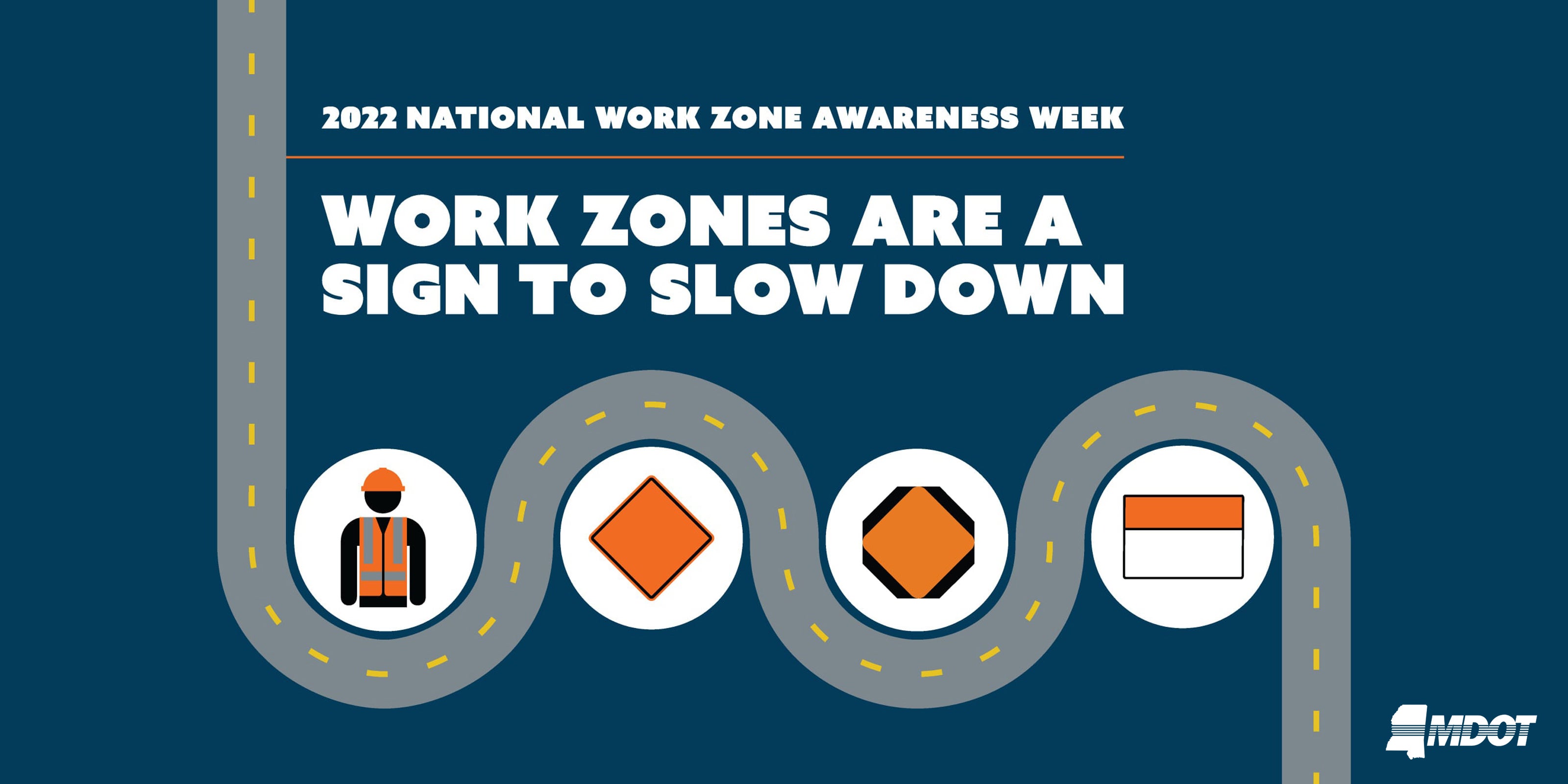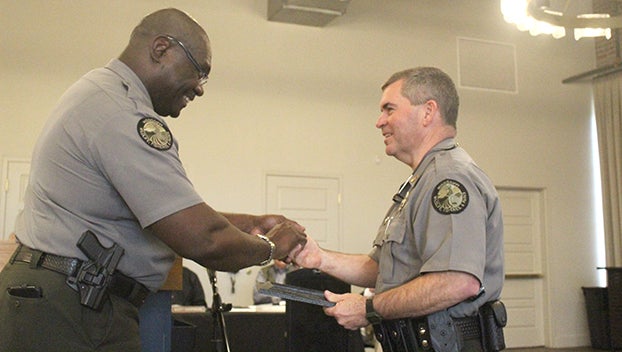MDOT, Governor: ‘Work zones are a sign to slow down’
Published 9:18 am Monday, April 11, 2022
The Mississippi Department of Transportation (MDOT) and Governor Tate Reeves are joining forces this week to remind the public that “Work zones are a sign to slow down,” the theme for 2022’s National Work Zone Awareness Week, scheduled for April 11-15.
To call attention to the life-and-death issues facing workers and the public in work zones, Gov. Tate Reeves has proclaimed April 11-15 as “Work Zone Awareness Week” in Mississippi.
Each morning MDOT maintenance and construction crews leave the safety of home and report to work to ensure the state’s roads remain in the safest possible condition. However, the nature of this work puts these crews in harm’s way every day. MDOT roadside crews work only feet away from vehicles traveling at high speeds. Highways are the “office” of MDOT’s maintenance and construction crews. While MDOT crews work as safely as possible, their environment is often an unpredictable one — and their safety is in your hands.
“MDOT has over 3,000 employees statewide and almost 75 percent of these employees work in the field alongside traffic,” said MDOT Executive Director Brad White. “This is an extremely dangerous environment, especially when accounting for the significant rise in cell phone use amongst drivers today. That is why this week is so important to us as we remind drivers that they play a huge role in keeping MDOT workers safe.”
Work zones are marked with signs and advanced warnings to give drivers as much notice as possible before entering the work zone. No matter how many signals are in place, no work zone is safe unless drivers pay attention and slow down. MDOT maintenance and construction staff are trained to work on Mississippi’s highways. However, regardless of the amount of training or how well a work zone is set up, these crews rely on the traveling public to keep them safe and help them get home to their families at the end of the day.
From distracted driving to speeding, highway workers understand that part of their workplace safety rests with the traveling public. In recent years, work zone related crashes have continued to trend in the wrong direction. In 2020, 774 fatal crashes in work zones occurred nationally, resulting in 857 total work zone fatalities. Five of those were in Mississippi. Work zone safety awareness is not only designed for the safety of roadside workers, but also drivers themselves: approximately 85 percent of all work zone related fatalities were the driver or passenger.
Whether it’s a major interstate or a rural highway, knowing how to identify and follow advanced warning signs for the type of work zone motorists are about to encounter can help prevent crashes. Regardless of the work being performed, each MDOT work zone has advanced warning signs alerting the traveling public of the work they are approaching. One of the best ways to stay safe when approaching and traveling through a work zone is by simply paying attention to advanced warning signs.
Stay safe while traveling through work zones with these travel tips:
- Pay attention. You should always keep your eyes on the road, but this is exceptionally important in work zones. Be aware of all signage throughout work zones that can indicate reduced speeds, lane changes and other important information.
- Avoid distractions. This not only includes cell phone use, but eating, drinking, and operating radios or GPS devices.
- Slow down. Lane closures, traffic pattern shifts and reduced speeds are common in work zones. Be sure to slow down when entering a work zone and keep an eye out for roadside workers.
- Move into the open lane. When approaching lane closures, move into the open lane as soon as possible. Be sure to pay close attention to vehicles around you that could be in your blind spot.
- Keep your distance. Rear-end crashes are extremely common in work zones – maintain extra space between your vehicle and the one in front of you at all times.
- Research your route. Before setting out on the road, research your route. When possible, avoid active work zones and use any detours that are available.
Work zones are set up according to the type of work being performed. MDOT and other state DOTs follow the Manual on Uniform Traffic Control Devices (MUTCD), developed by the Federal Highway Administration (FHWA), which defines the standards used by road managers nationwide to install and maintain traffic control devices on roads open to public travel.
“With spring here, you are going see and experience a lot of work zones all around our state. When you see orange, slow down, pay attention and avoid all distractions,” said White. “Remember, the roadside workers you pass behind the barrels, cones and barricades are someone’s father, mother, son, daughter, friend or neighbor. They all want to get home safely, just like you.”
Highway work zones are meant to protect the traveling public and the highway workers on the side of the road. Highway work zones can be found throughout the state and often present unfamiliar traffic conditions. Examples of common work zones found on Mississippi highways and a complete list of tips can be found at GoMDOT.com/drivesmartms.






